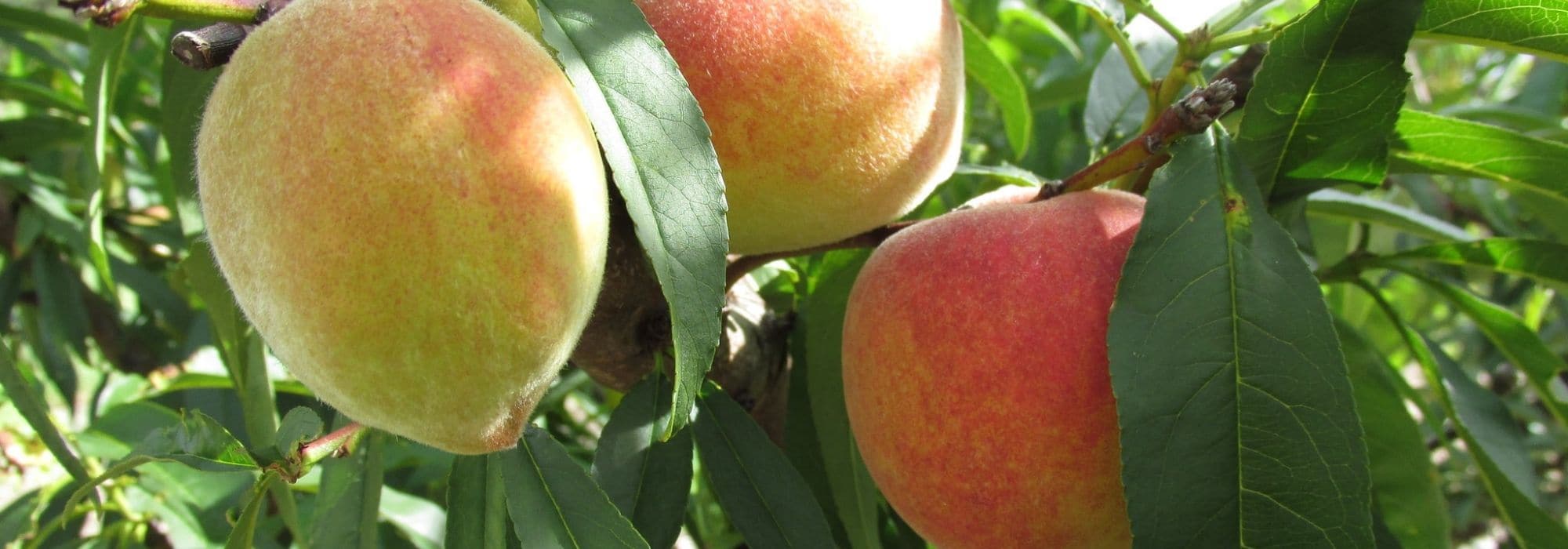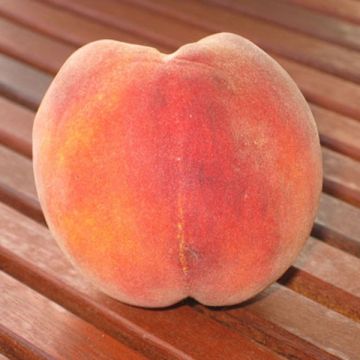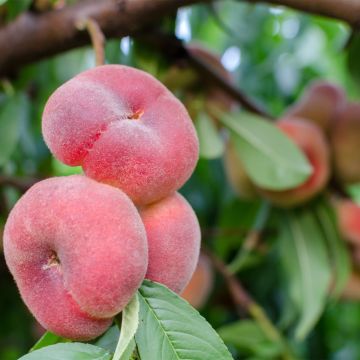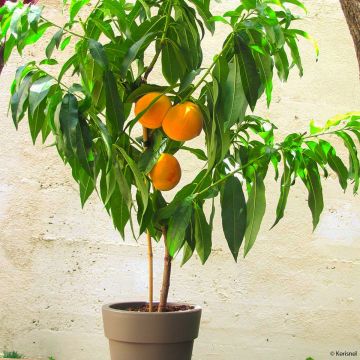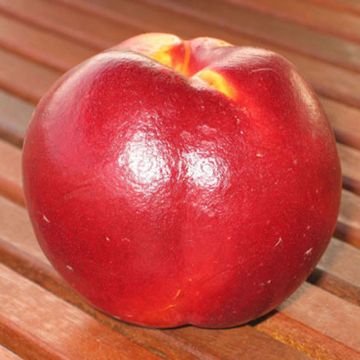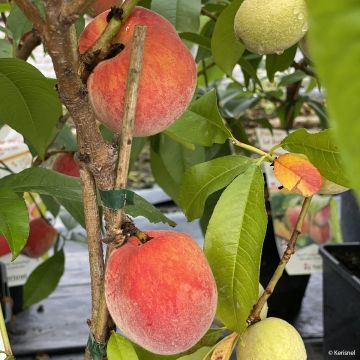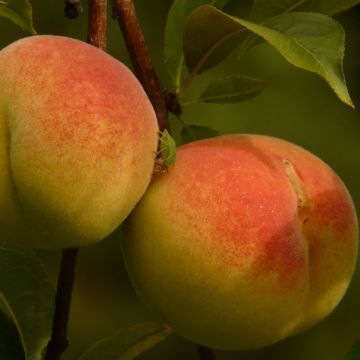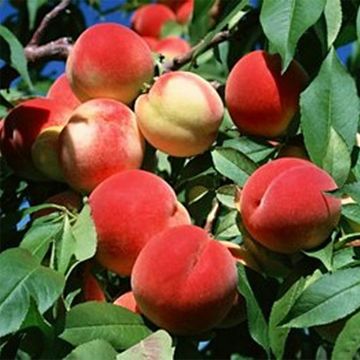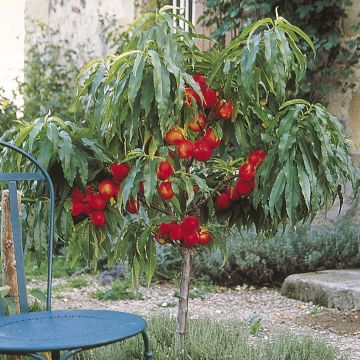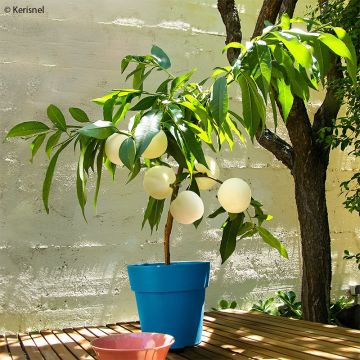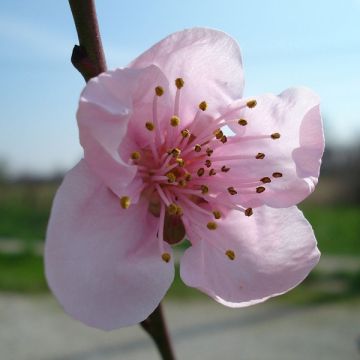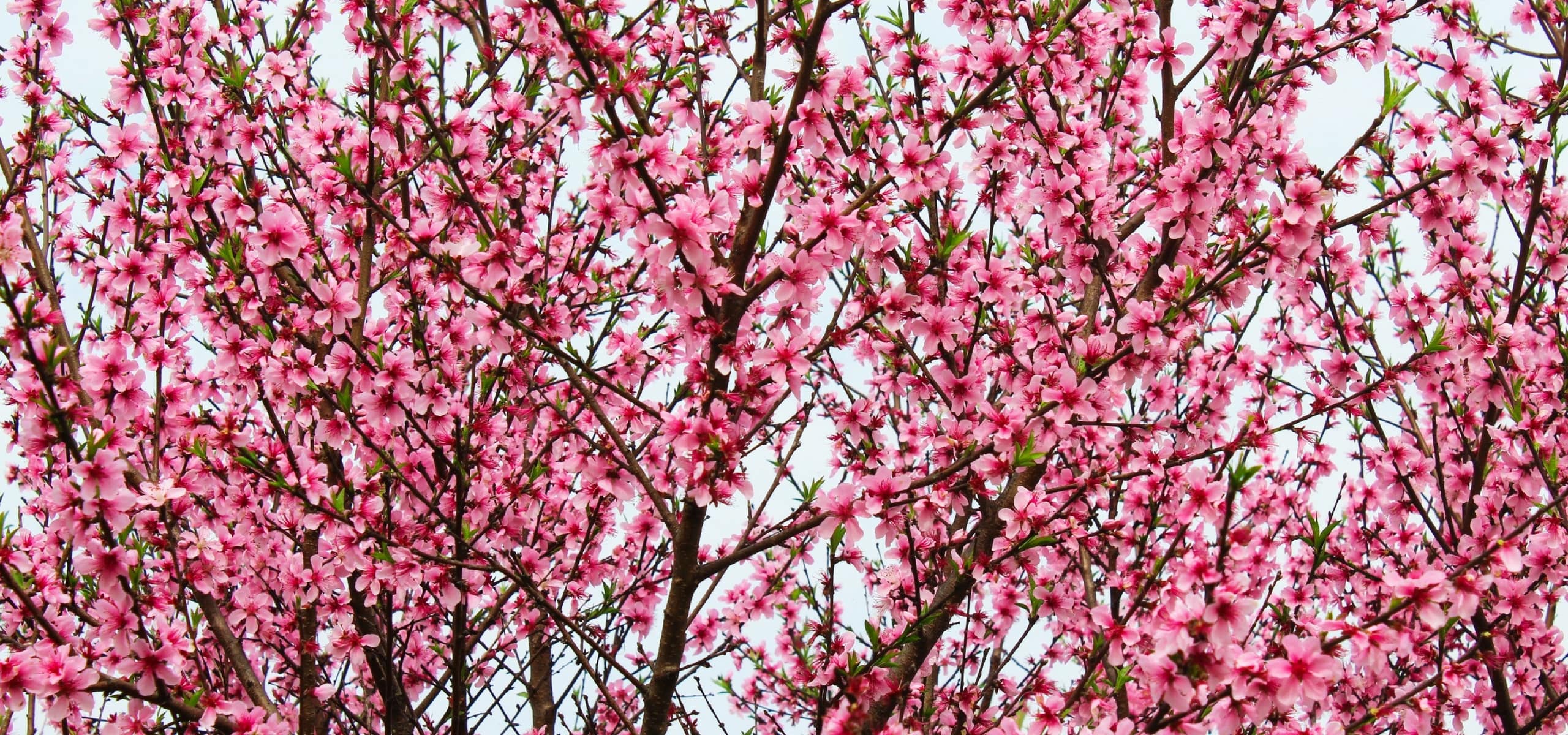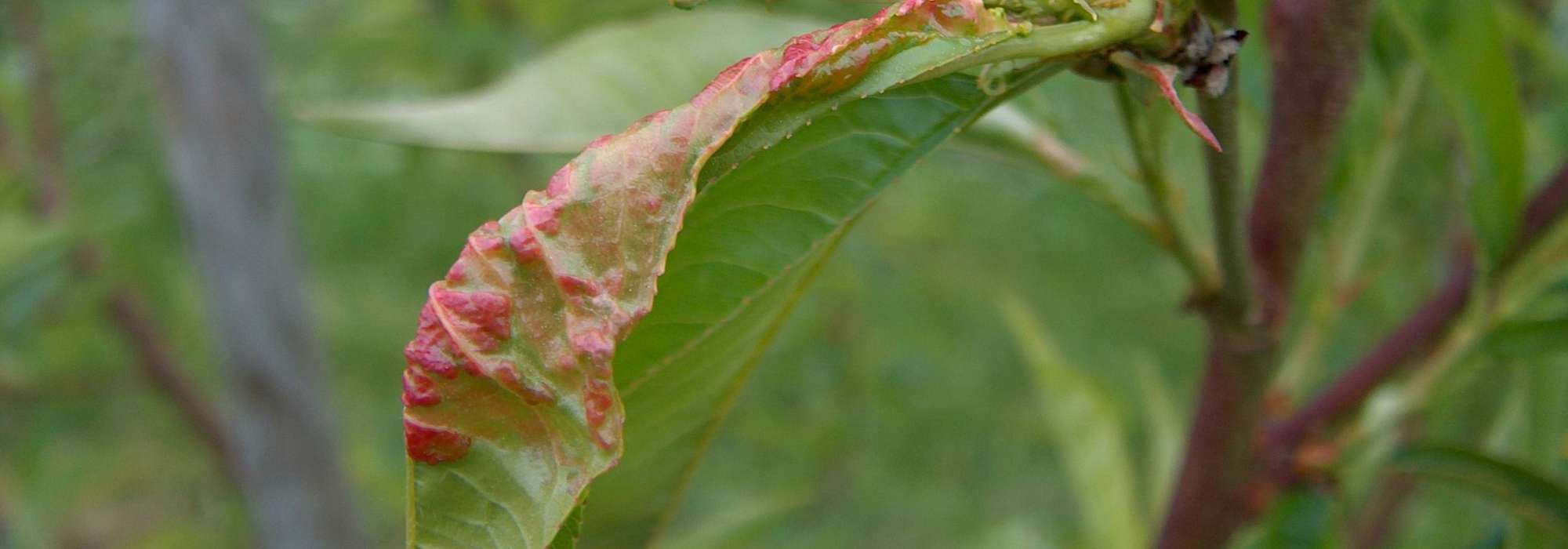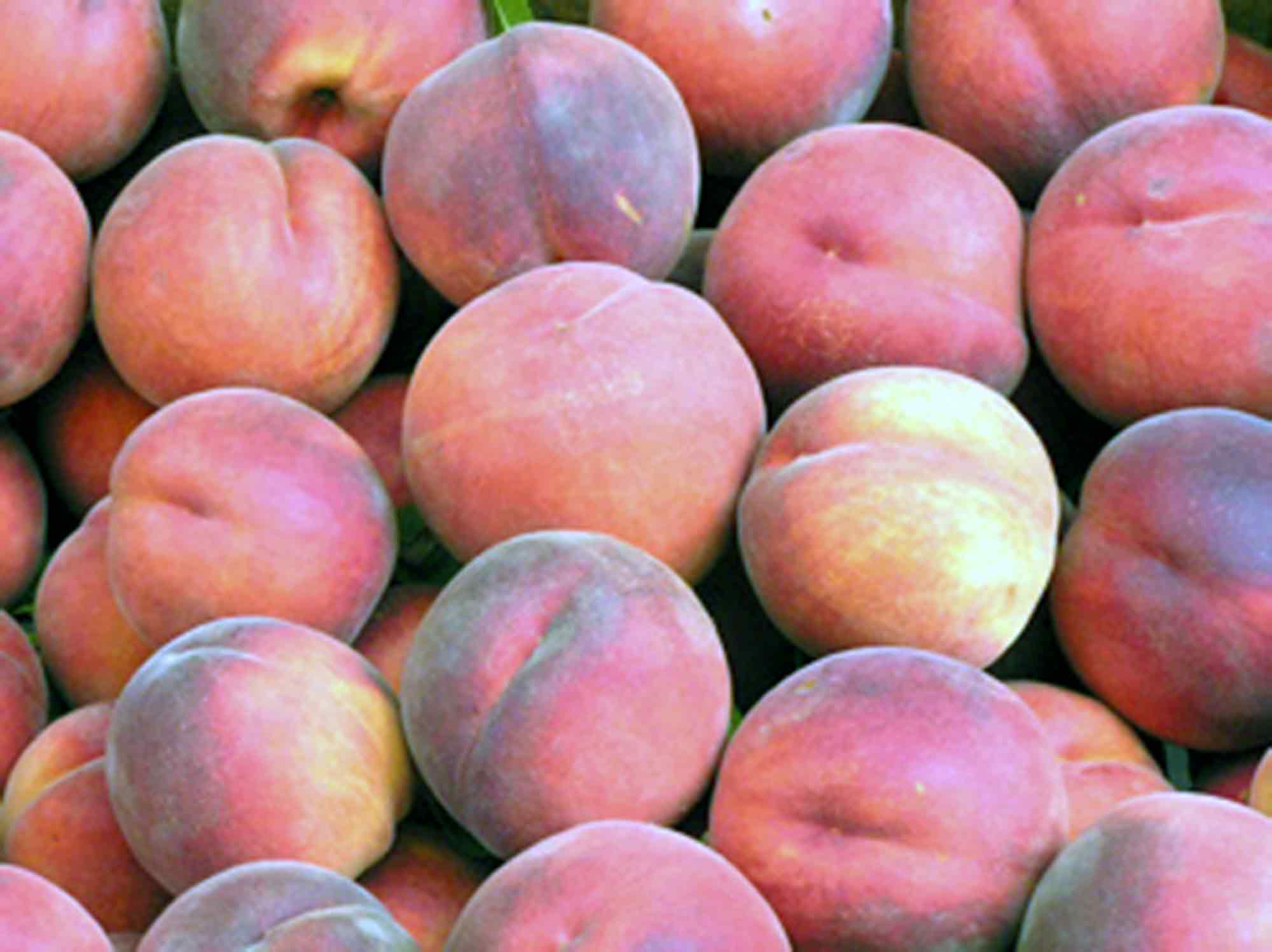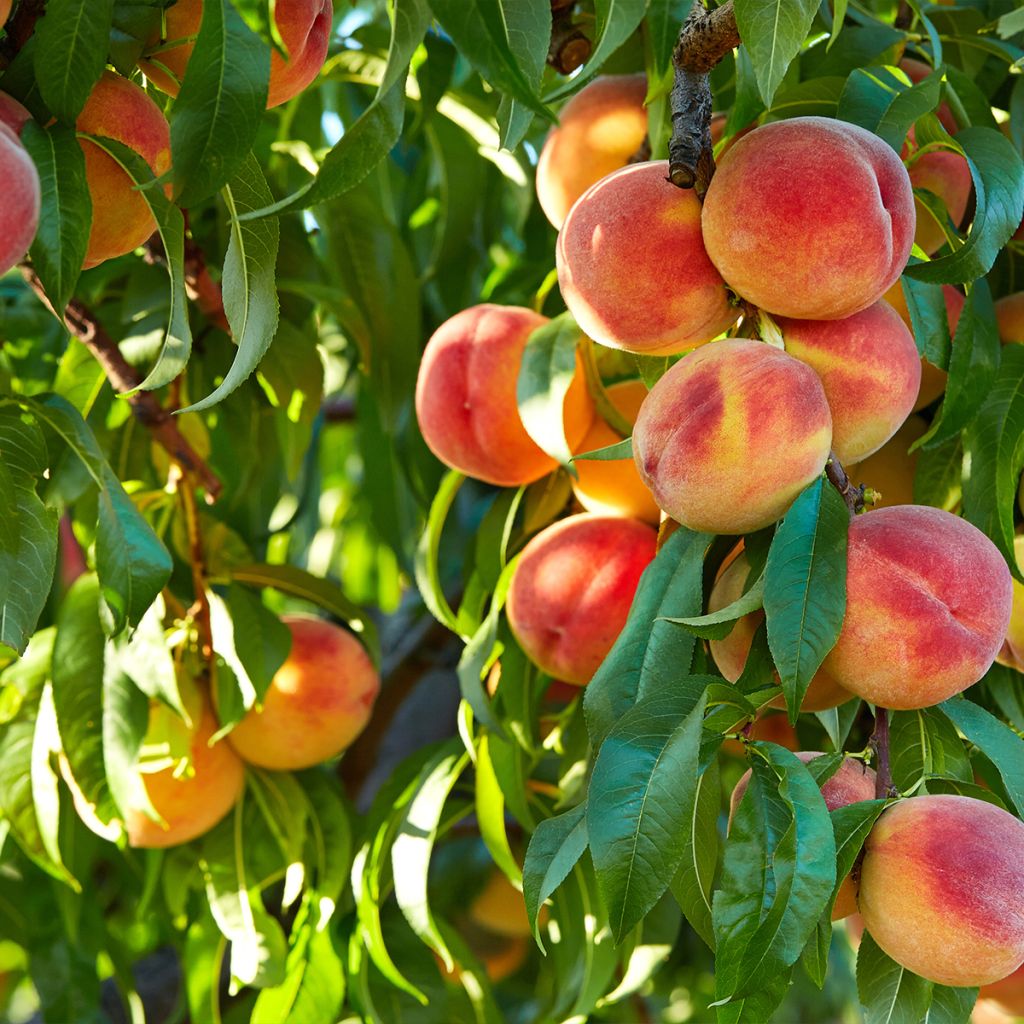

Prunus persica Fertile September - Peach Tree
Prunus persica Fertile September - Peach Tree
Prunus persica Fertile de Septembre
Peach, Peach tree
Plant smaller than indicated size.
Corinne , 11/02/2024
Special offer!
Receive a €20 voucher for any order over €90 (excluding delivery costs, credit notes, and plastic-free options)!
1- Add your favorite plants to your cart.
2- Once you have reached €90, confirm your order (you can even choose the delivery date!).
3- As soon as your order is shipped, you will receive an email containing your voucher code, valid for 3 months (90 days).
Your voucher is unique and can only be used once, for any order with a minimum value of €20, excluding delivery costs.
Can be combined with other current offers, non-divisible and non-refundable.
Home or relay delivery (depending on size and destination)
Schedule delivery date,
and select date in basket
This plant carries a 6 months recovery warranty
More information
We guarantee the quality of our plants for a full growing cycle, and will replace at our expense any plant that fails to recover under normal climatic and planting conditions.

Description
Prunus persica Fertile September is a vigorous, hardy, self-fertile variety that is highly productive and resistant to diseases, including peach leaf curl and brown rot. It produces abundant medium-sized fruits with a round shape and a very fuzzy, cream-yellow skin marbled with pink-red on the sunny side. Its creamy white flesh, veined with red near the stone, is soft, slightly fibrous, juicy, and sweet, with excellent taste. The harvest takes place in the second half of September, and the fruits are consumed as they ripen. This peach tree is sensitive to spring frosts and prefers a warm, sunny, and sheltered location.
Prunus persica (Common Peach) is a fruit tree belonging to the Rosaceae family, originating from China in the Sichuan and Guizhou regions around 500 BC. It was introduced to Europe in the 6th century and experienced significant development in the 19th century. Since then, numerous selections have been made to improve the fruit's taste qualities.
The Fertile September variety comes from a seedling of a local variety from the Sombreffe region (Belgium) and was selected by the Gembloux Agricultural Research Centre (Belgium) in 1987. It is a small, vigorous fruit tree with a fairly upright framework that can reach a height of 3 to 4 metres (10 to 13 feet), with a diameter of around 3 metres (10 feet). Its habit is well suited for low forms (such as goblet) or espaliers. Its foliage consists of lanceolate leaves, 8 to 15 cm (3 to 6in) long and 3 to 4 cm (1 to 2in) wide, with serrated and wavy edges, a vibrant green colour, turning yellow-orange in autumn before falling. The leaves have a slight almond fragrance. In April, the pink flowers, 2 to 3 cm (1in) in diameter, appear solitarily before the leaves on the previous year's branches. They can be destroyed by frost at temperatures below -2 to -3°C (28.4 to 26.6°F). It is a decorative flowering tree, particularly attractive to bees and butterflies. The tree is hardy down to -15°C (5°F), but late spring frosts can damage its flowers and affect fruiting. This variety is self-fertile and does not require other peach trees nearby for pollination. Prunus persica Fertile September quickly bears fruit.
Since peaches are very delicate, they should be handpicked with care. The fruits can be consumed immediately after harvest. Delicious, peaches can be enjoyed fresh from the tree. They are ideal for making compotes, ice creams, sorbets, tarts, pastries, fruit salads, or as accompaniments to savoury dishes with meat (duck, rabbit, chicken, etc.) or fish (salmon, cod, etc.). They are also perfect for making juices or fruit syrups. Peaches are rich in water, refreshing, and thirst-quenching. With their fleshy texture, they provide a feeling of satiety. Low in calories, they are also a good source of potassium, magnesium, and phosphorus, with a significant iron content. Peaches are rich in vitamin C and B, antioxidants, and fibre, making them a healthy choice. They are invigorating, energising, and rehydrating. The fruits can be stored for up to a week in a cool place away from light.
In the Peach - Nectarine category, Prunus persica Fertile September is a variety known for its disease resistance and the excellent taste of its fruit. Like many fruit trees, it prefers rich, deep, and well-drained soils. The peach tree thrives in full sun, sheltered from drafts and cold winds. A southeast or southwest exposure is ideal. In regions that frequently experience late spring frosts, the peach tree can be trained against a south-facing wall. Very popular due to its fruit, the peach tree is a great addition to any garden, delighting both young and old. With a wide range of varieties available, it's easy to find one that suits your preferences.
Prunus persica Fertile September - Peach Tree in pictures
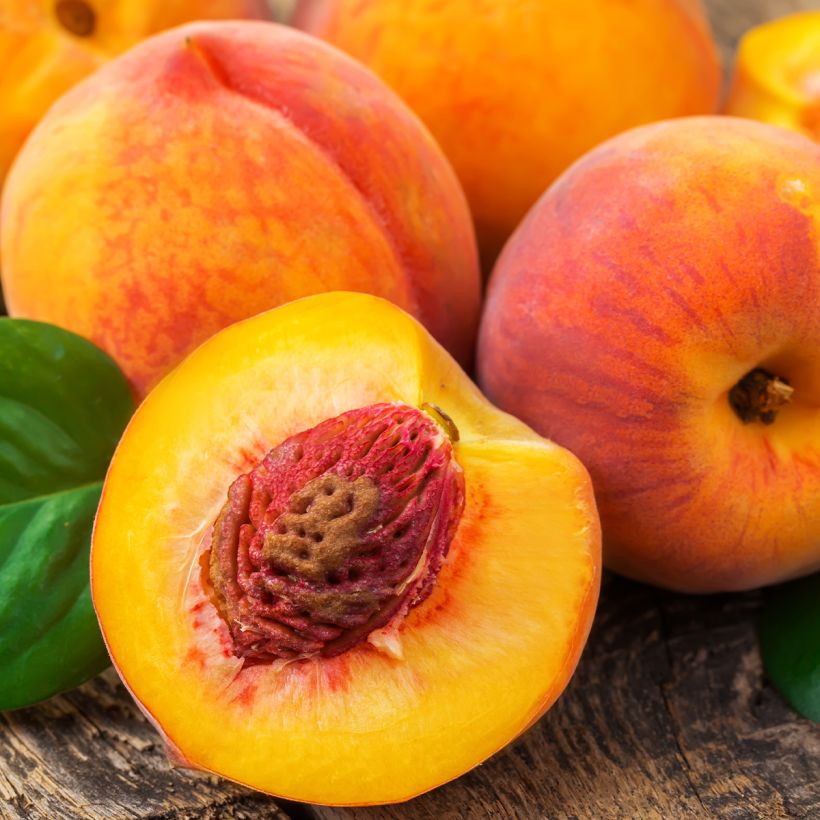

Plant habit
Fruit
Flowering
Foliage
Botanical data
Prunus
persica
Fertile de Septembre
Rosaceae
Peach, Peach tree
Cultivar or hybrid
Other Peach and Nectarine trees
View all →Planting and care
The Fertile September Peach is planted in full sun, sheltered from drafts and cold winds. A southeast or southwest exposure suits it perfectly. If you do not live in a mild climate, the peach tree can be trained against a south-facing wall. In regions that frequently experience late spring frosts, it will be more difficult, if not impossible, to fruit a peach tree.
It requires ordinary soil that is rich, deep, and well-drained. The peach tree fears heavy and waterlogged soils, as well as alkaline soils.
The planting period depends on the form of the peach tree. Thus, a bare-root peach tree should be planted from October to March, excluding periods of frost. A bare-root fruit tree should be planted immediately after purchase, as the roots should not be exposed to sunlight and open air. If you cannot plant it immediately, put it in a temporary planting bed.
When purchased in a container the peach tree can be planted in autumn, from October to December, again excluding periods of frost, or even in spring.
Dig a hole at least 60 cm (24in) deep and 1 metre (3 feet) wide, at least one week before planting. Remove all stones and weeds. Place the container in a basin to moisten the root ball by capillarity. Add two handfuls of crushed horn to the bottom of the hole. Mix the excavated soil with well-rotted compost, well-decomposed manure, or potting soil. Fill the hole halfway with the excavated soil. Plant a stake at least 50 cm (20in) deep. Place the peach tree in the hole. Fill with the remaining soil. Gently firm the soil around the peach tree and tie it to the stake. Form a basin and water abundantly.
Proceed in the same way if you plant a bare-root peach tree. But do not forget to dress and carry out pralinage on the bare roots before planting.
Planting period
Intended location
Care
Planting & care advice
-
, onOrder confirmed
Reply from on Promesse de fleurs
Haven't found what you were looking for?
Hardiness is the lowest winter temperature a plant can endure without suffering serious damage or even dying. However, hardiness is affected by location (a sheltered area, such as a patio), protection (winter cover) and soil type (hardiness is improved by well-drained soil).

Photo Sharing Terms & Conditions
In order to encourage gardeners to interact and share their experiences, Promesse de fleurs offers various media enabling content to be uploaded onto its Site - in particular via the ‘Photo sharing’ module.
The User agrees to refrain from:
- Posting any content that is illegal, prejudicial, insulting, racist, inciteful to hatred, revisionist, contrary to public decency, that infringes on privacy or on the privacy rights of third parties, in particular the publicity rights of persons and goods, intellectual property rights, or the right to privacy.
- Submitting content on behalf of a third party;
- Impersonate the identity of a third party and/or publish any personal information about a third party;
In general, the User undertakes to refrain from any unethical behaviour.
All Content (in particular text, comments, files, images, photos, videos, creative works, etc.), which may be subject to property or intellectual property rights, image or other private rights, shall remain the property of the User, subject to the limited rights granted by the terms of the licence granted by Promesse de fleurs as stated below. Users are at liberty to publish or not to publish such Content on the Site, notably via the ‘Photo Sharing’ facility, and accept that this Content shall be made public and freely accessible, notably on the Internet.
Users further acknowledge, undertake to have ,and guarantee that they hold all necessary rights and permissions to publish such material on the Site, in particular with regard to the legislation in force pertaining to any privacy, property, intellectual property, image, or contractual rights, or rights of any other nature. By publishing such Content on the Site, Users acknowledge accepting full liability as publishers of the Content within the meaning of the law, and grant Promesse de fleurs, free of charge, an inclusive, worldwide licence for the said Content for the entire duration of its publication, including all reproduction, representation, up/downloading, displaying, performing, transmission, and storage rights.
Users also grant permission for their name to be linked to the Content and accept that this link may not always be made available.
By engaging in posting material, Users consent to their Content becoming automatically accessible on the Internet, in particular on other sites and/or blogs and/or web pages of the Promesse de fleurs site, including in particular social pages and the Promesse de fleurs catalogue.
Users may secure the removal of entrusted content free of charge by issuing a simple request via our contact form.
The flowering period indicated on our website applies to countries and regions located in USDA zone 8 (France, the United Kingdom, Ireland, the Netherlands, etc.)
It will vary according to where you live:
- In zones 9 to 10 (Italy, Spain, Greece, etc.), flowering will occur about 2 to 4 weeks earlier.
- In zones 6 to 7 (Germany, Poland, Slovenia, and lower mountainous regions), flowering will be delayed by 2 to 3 weeks.
- In zone 5 (Central Europe, Scandinavia), blooming will be delayed by 3 to 5 weeks.
In temperate climates, pruning of spring-flowering shrubs (forsythia, spireas, etc.) should be done just after flowering.
Pruning of summer-flowering shrubs (Indian Lilac, Perovskia, etc.) can be done in winter or spring.
In cold regions as well as with frost-sensitive plants, avoid pruning too early when severe frosts may still occur.
The planting period indicated on our website applies to countries and regions located in USDA zone 8 (France, United Kingdom, Ireland, Netherlands).
It will vary according to where you live:
- In Mediterranean zones (Marseille, Madrid, Milan, etc.), autumn and winter are the best planting periods.
- In continental zones (Strasbourg, Munich, Vienna, etc.), delay planting by 2 to 3 weeks in spring and bring it forward by 2 to 4 weeks in autumn.
- In mountainous regions (the Alps, Pyrenees, Carpathians, etc.), it is best to plant in late spring (May-June) or late summer (August-September).
The harvesting period indicated on our website applies to countries and regions in USDA zone 8 (France, England, Ireland, the Netherlands).
In colder areas (Scandinavia, Poland, Austria...) fruit and vegetable harvests are likely to be delayed by 3-4 weeks.
In warmer areas (Italy, Spain, Greece, etc.), harvesting will probably take place earlier, depending on weather conditions.
The sowing periods indicated on our website apply to countries and regions within USDA Zone 8 (France, UK, Ireland, Netherlands).
In colder areas (Scandinavia, Poland, Austria...), delay any outdoor sowing by 3-4 weeks, or sow under glass.
In warmer climes (Italy, Spain, Greece, etc.), bring outdoor sowing forward by a few weeks.






























